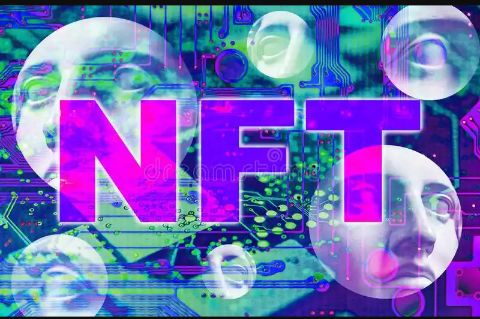Before their mainstream acceptance, NFTs were developed. It’s said that “Quantum,” created and tokenized by Kevin McKoy in 2014 on one blockchain (Namecoin), was the first NFT sold. Quantum was reportedly minted and sold on Ethereum in 2021.
The ERC-721 (Ethereum Request for Comment #721) standard, which specifies how ownership is transferred, methods for confirming transactions, and how applications handle safe transfers, is followed in the construction of NFTs (among other requirements).
The ERC-1155 standard, which was approved six months after ERC-721, enhances ERC-721 by grouping several non-fungible tokens into a single contract and so lowering transaction costs.
Assets that have been tokenized using a blockchain are known as non-fungible tokens (NFTs). They are given certain metadata and identifying codes that set them apart from other tokens.
Depending on the value that the market and owners have assigned to NFTs, they can be traded or swapped for cash, cryptocurrencies, or other NFTs. For example, you could utilize an exchange to develop a token for a banana image. The NFT may fetch millions for some buyers while being considered worthless by others.
The main distinction between cryptocurrencies and other tokens is that, as fungible assets, cryptocurrencies from the same blockchain can be exchanged for one another. Although they may appear to be identical, two NFTs from the same blockchain are not interchangeable.
POINTS TO NOTE
a. Non-fungible tokens, or NFTs for short, are distinct cryptographic tokens that exist on a blockchain and cannot be copied.
b. NFTs can represent both digital and physical objects, including artwork and real estate.
c. These physical assets can be “tokenized” to make trading, purchasing, and selling them more efficient while lowering the risk of fraud.
d. Among other things, NFTs can reflect people’s identities and property rights.
e. After the general public learned more about NFTs, investors, and collectors started looking for them, but their appeal has since diminished.
NFTs’ Operation
Through a process known as minting, wherein the NFT’s data is stored on a blockchain, NFTs are produced. The creation of a new block, validation of the NFT data by a validator, and closing of the block are the three main steps in the minting process. Smart contracts that handle ownership and transferability of the NFT are frequently incorporated as part of the minting process.
Each time a token is created, a special identifier that is connected to a single blockchain address is given to it. Every token has an owner, and the owner’s details (including the location of the token’s minting address) are made known to the public. Each NFT contains a distinctive identity that allows it to be identified from the others, even if 5,000 of the same token are produced (like general admission movie tickets).
Advantages of Non-Fungible Tokens
Market efficiency is arguably the NFT’s most obvious advantage. A tangible item can be tokenized to expedite sales procedures and get rid of middlemen. NFTs can do away with the need for agents and enable merchants to communicate directly with their target audiences by representing actual or digital artwork on a blockchain (assuming the artists know how to host their NFTs securely).
Conclusion
The relatively straightforward concept of cryptocurrency has evolved into non-fungible tokens. For a variety of asset categories, including real estate, lending agreements, and artwork, modern finance systems include sophisticated trading and financing systems. NFTs further the reimagining of this infrastructure by enabling digital representations of assets.
To be clear, neither the concept of using unique identification nor the idea of digital representations of real goods is new. But when these ideas are coupled with the advantages of a tamper-proof blockchain with smart contracts and automation, they transform into a powerful force for change.











